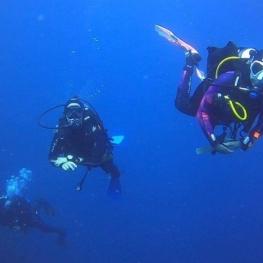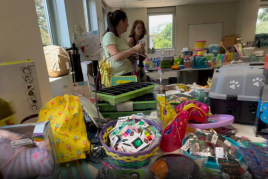The Medieval architecture of the Empordà

The Baix Empordà region is a territory that, during the 8th century, was already part of the "brand" of the Carolingian empire against the Muslims, the so-called Old Catalonia.
Therefore, it is logical that medieval architecture has a very important weight in the towns of the region, especially in the interior. The route runs through part of the most representative medieval towns of the Baix Empordà.
Data sheet
- Point of departure and point of arrival: We leave from the rest area in front of the Forallac Town Hall, located on Calle de la Unión in the center of Vulpellac. The point of departure and arrival is very close to the (C-66), at the entrance to La Bisbal d'Empordà.
- Mileage: 25.9km
- Time: 1h 45min of walking and 4h 15min in total approximately
- Difficulty: medium
- Signage: There are no problems following this itinerary, all the sections that are followed are signposted.
Vulpellac
 It is a municipality of the Baix Empordà, centered by the old Vulpellac castle of Romanesque style, recently restored. Attached to the castle is the parish church of San Julia and Santa Basilisa, a Gothic building that had been fortified and was renovated at the beginning of the 16th century. It is advisable to go around the town. Once located together City Hall, we began the route by the street of the Union, happening through the long Square and following by the street of Santa Basilisa.
It is a municipality of the Baix Empordà, centered by the old Vulpellac castle of Romanesque style, recently restored. Attached to the castle is the parish church of San Julia and Santa Basilisa, a Gothic building that had been fortified and was renovated at the beginning of the 16th century. It is advisable to go around the town. Once located together City Hall, we began the route by the street of the Union, happening through the long Square and following by the street of Santa Basilisa.
Canapost
Among the houses of the town of Canapost, the beauty of the parish church of San Esteban stands out. It is a primitive temple of a nave, a transcept and a trapezoidal apse from the pre-Romanesque period. Later, in the northern part, another nave was added with a semicircular apse from the Romanesque period. The bell tower, built during the 12th century, remained unfinished at the height of the second floor. The west facade and the front of the church were reformed in the 18th century. In the interior fragments of Romanesque mural painting are conserved.
Next to the building, the remains of a necropolis (5th-8th centuries) were located, from which some stone sarcophagi can be seen.
Peratallada
 Before us rises the town of Peratallada, which belongs to the municipality of Forallac, and, as its name suggests, comes from Piedra Tallada because of the cuts in the living rock that were made when the town was founded. The Homage Tower stands out , which belongs to the palace castle of the ancient lords of Peratallada. The church of San Esteban, dated from the 12th and 13th centuries, is outside the walls of the Peratallada nucleus.
Before us rises the town of Peratallada, which belongs to the municipality of Forallac, and, as its name suggests, comes from Piedra Tallada because of the cuts in the living rock that were made when the town was founded. The Homage Tower stands out , which belongs to the palace castle of the ancient lords of Peratallada. The church of San Esteban, dated from the 12th and 13th centuries, is outside the walls of the Peratallada nucleus.
Palau-sator
Palau-Sator still retains its old medieval urban layout. The walled enclosure was well defined and you can see different elements of the defenses of the town, such as the emblematic tower of the Hours (fourteenth century). The castle was built in the 21st century, but the current building has been renovated and modified several times during history.
The old town is presided over by a rectangular tower, 20 meters high, which had been part of the castle and which is the only unaltered element. Another interesting building is the parish church of San Pedro of the XII-XIII centuries, built at the time of transition to Gothic, although it was renovated in the XVI-XVII century.
Ullastret
 The old town of Ullastret is formed by small narrow and steep streets, surrounded by the wall that protected the grounds of the old castle, of which there is no other vestige. The wall is fortified with ten towers.
The old town of Ullastret is formed by small narrow and steep streets, surrounded by the wall that protected the grounds of the old castle, of which there is no other vestige. The wall is fortified with ten towers.
The parish church of San Pedro is a Romanesque building, presided by an apse of Lombard decoration, although the door was renovated in the eighteenth century. One of the most beautiful and emblematic elements of the town is the Lonja or Gothic covered plaza (XIV-XV centuries). In different streets, majestic centers were built in the 16th and 17th centuries.
La Bisbal d'Empordà
We reached the end of the dirt road. We are at the height of the Municipal Sports Pavilion. It is worth visiting the Villa, the popular name to designate the old center of La Bisbal d'Empordà.
The old town of La Bisbal, popularly called the Villa, is located on the right bank of the Daró River. It forms a small labyrinth of alleys and squares, whose center is the Plaza Mayor, presided over by the parish church of Santa María in 1701. Nearby, Calle del Call reminds us of the important Jewish community that inhabited the city.
Of the wall that surrounded the old nucleus only the beautiful portal of the Riera remains , to the exit of which the Old bridge is modified or reconstructed, in the XVII century . An emblematic building is the palace castle, a remarkable example of Catalan civil Romanesque, built in the second half of the 11th century.
Fonteta
The town of Fonteta a small town that belongs to the municipality of Forallac. We can approach and visit its nucleus, as well as the church of Santa María.
Soucre: Consell Comarcal del Baix Empordà
What to do
Terracotta Museu de Ceràmica
La Bisbal d'EmpordàThe Terracotta Ceramic Museum aims to preserve and disseminate the scientific, technical…
Triton Diving Llafranc
Palafrugell (a 12.7 Km)The center is located about 100 meters from the beach and the…
Creuers Mare Nostrum
L'Escala (a 14.8 Km)We are a family business that has been dedicated since the late…
Where to eat
L'Espai Gastronomia
Tossa de Mar (a 28.3 Km)Enjoy a place where laughter, festivity, and gastronomy unfold around a large…
Where to sleep
Casa Rural Mas Masaller
Cruïlles, Monells i Sant Sadurní de l'Heura (a 2.4 Km)Isolated farmhouse almost 3 kilometres from La Bisbal de Empordà. The farmhouse…
Hotel Àncora
Palamós (a 13.5 Km)Freshly prepared market cuisine featuring fresh fish from the port of Palamós…

















